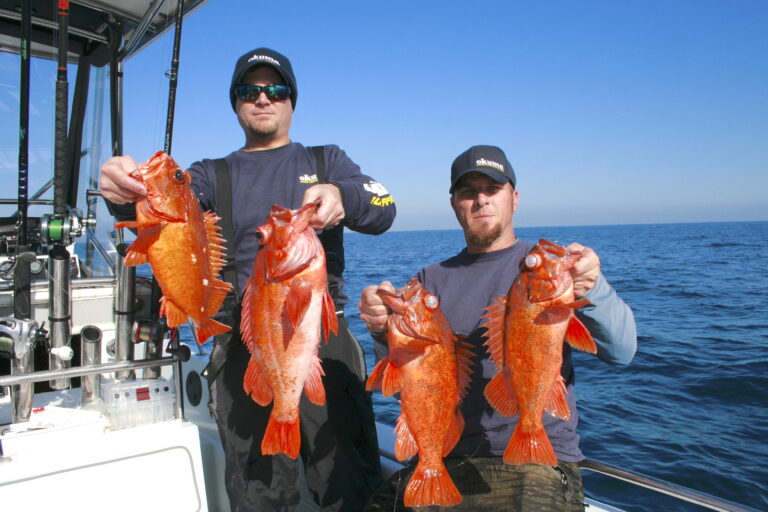Successful fishing comprises literally thousands of individual bits of knowledge, some gained through experience, some through study, and plenty from passed-along information. It’s safe to say no one knows it all, and what’s second nature to one angler may be an epiphany for another. While all of us are eager to learn new things, everyone benefits by brushing up on skills from time to time.
How to Straighten Fishing Leader
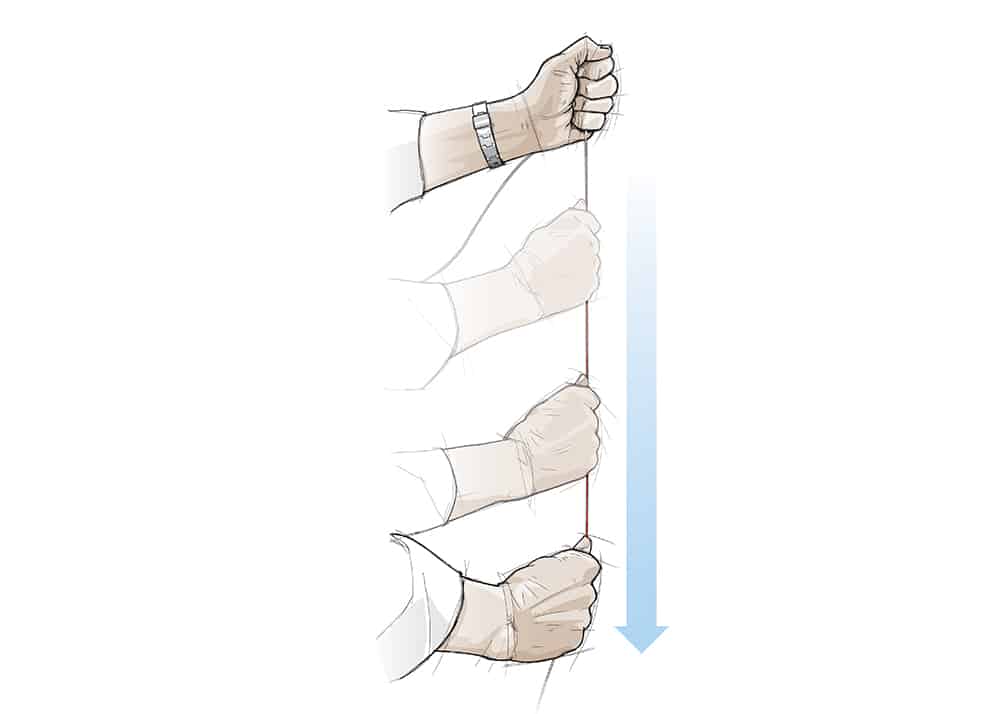
Maintaining control over a bait or lure is fundamental to success, and slack in your line often means missed clues or missed strikes. Eliminating coils in mono leaders is a quick ticket to better control.
Heat combined with stretching straightens mono, but too much heat weakens the line. To safely straighten a leader, hold one end tight and make a fist around the line with the other hand. Squeeze tightly and slide that hand steadily down the length of the leader, stretching and heating it. Your own pain threshold will prevent you from overheating the mono.
Remove Twists From Fishing Line
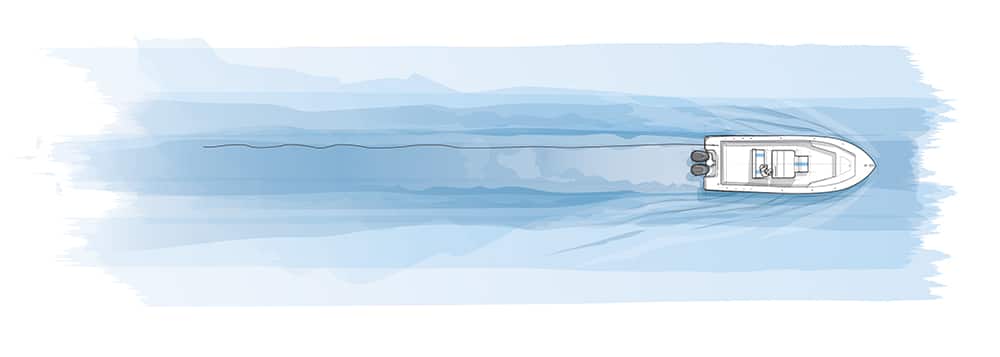
Spinning reels, by design, add a small amount of twist to the line with every revolution of the bail. After a time, these small twists accumulate and make the line difficult to manage.
Clip off the terminal tackle, open the reel bail, pull line off the spool, and feed it out through the rod. From a moving boat, the line will pull itself off the reel once a portion is in the water; or you can feed the line to a hard-running current from shore. Pay out more line than you’ve been fishing with and let it hang for a minute. The friction of the water will remove the twist as you reel up to re-rig and get back to fishing.
How to Anchor Your Boat Near Bridges
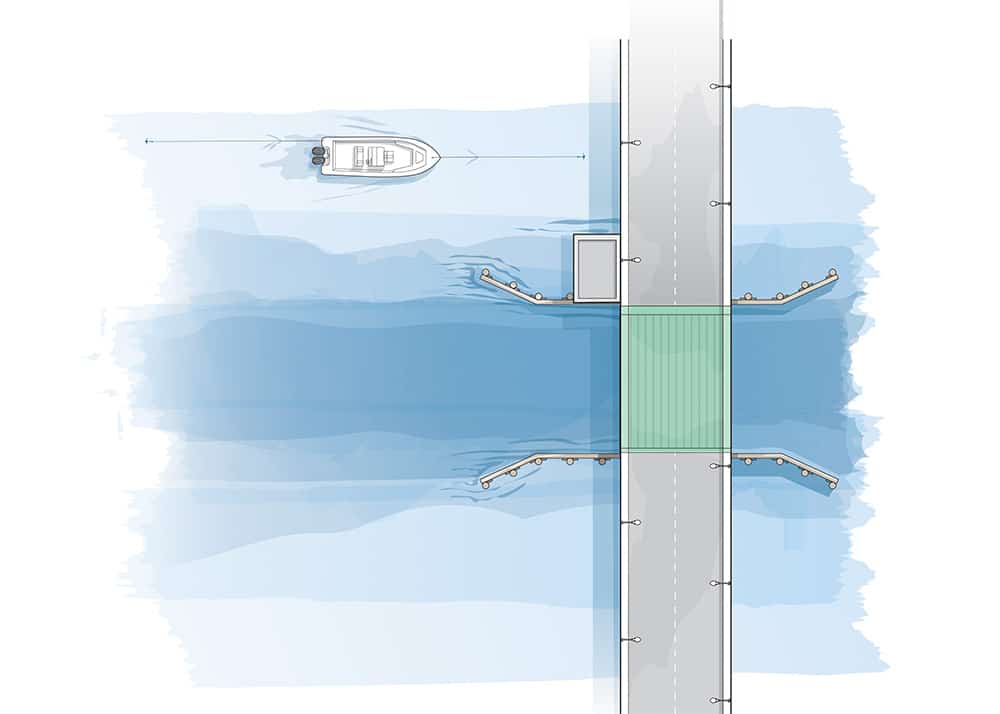
Channels — whether they run under bridges or breach adjacent shallows — make natural pathways for game fish. Attractive as they are to anglers, it’s critical to exercise good sense when setting up to fish them. Never anchor in a channel, which is akin to setting up a campsite in the middle of the street. Pick a spot off to the side, so as not to hinder traffic. This also puts you in the best position to fish. Consider setting a second anchor to prevent swinging into the channel. Bait and predators hunt the edges of the channels anyway, especially during low light, so keeping clear of the thoroughfare offers safety and productive fishing.
How to Use Circle Hooks for Fishing
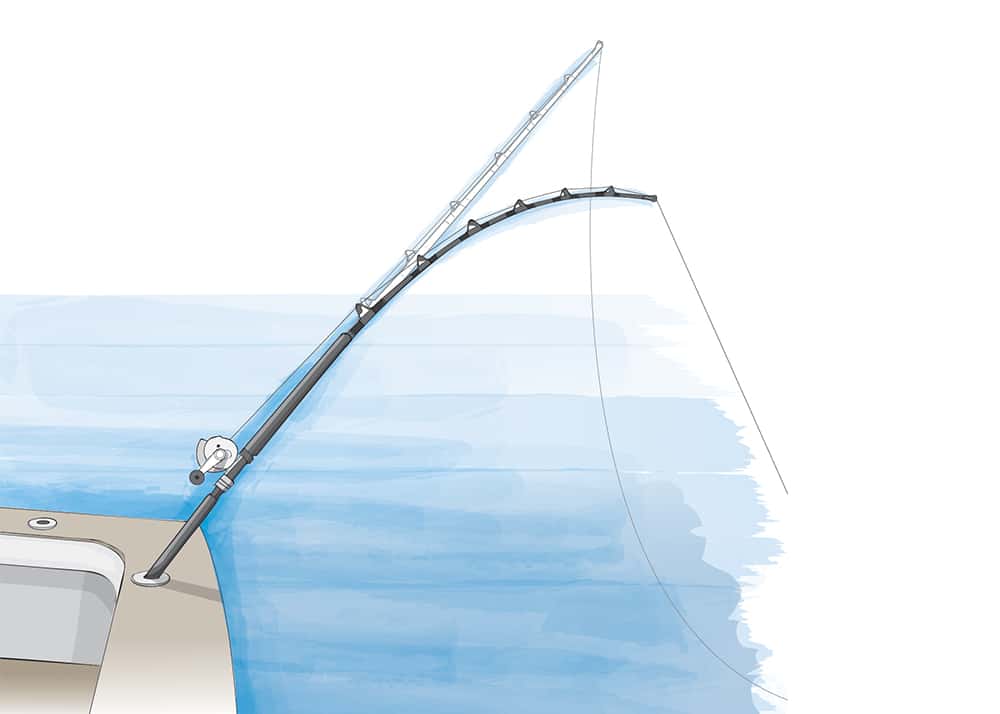
There’s a knack to setting a circle hook, and the skill set required is minimal. Basically, it amounts to doing nothing at all. The more you try to set a circle hook, the more fish you’ll lose.
Place the rod in a holder and leave it there. When a fish picks up the bait, it will swim off, which pulls the circle hook into the corner of its mouth where it will set itself. Then pick up the rod for the fight. If you’d like to be more involved, and you can stay as immobile as a rod holder, feel free to hold the rod still until you feel the hookup.
How to Crimp A Sleeve on Fishing Line
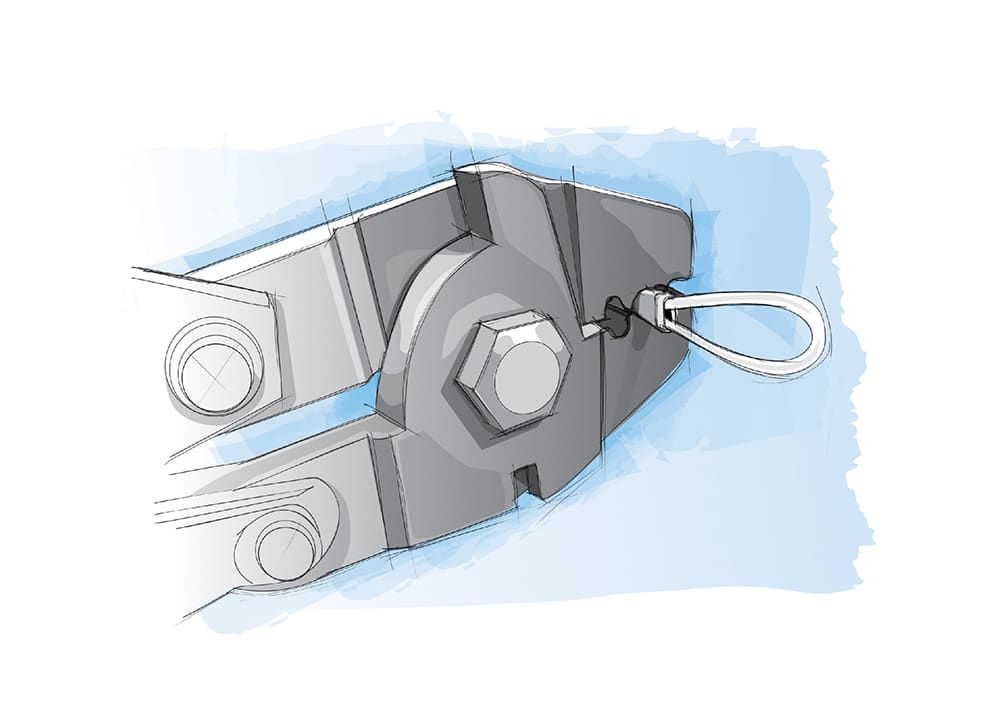
Crimping monofilament should be a science, but it’s more an art. Neither line diameters nor sleeve sizes are calibrated. It’s touch-and-fit, matching a crimping sleeve to the line. Once you find the right fit, determine which slot in the crimping press squeezes the crimp the tightest without damaging the line inside. Good crimps sit just inboard of the sleeve end, with the end of the sleeve slightly flared outward to prevent the edge of the sleeve from pressing into the line.
Have Zip Ties on the Boat
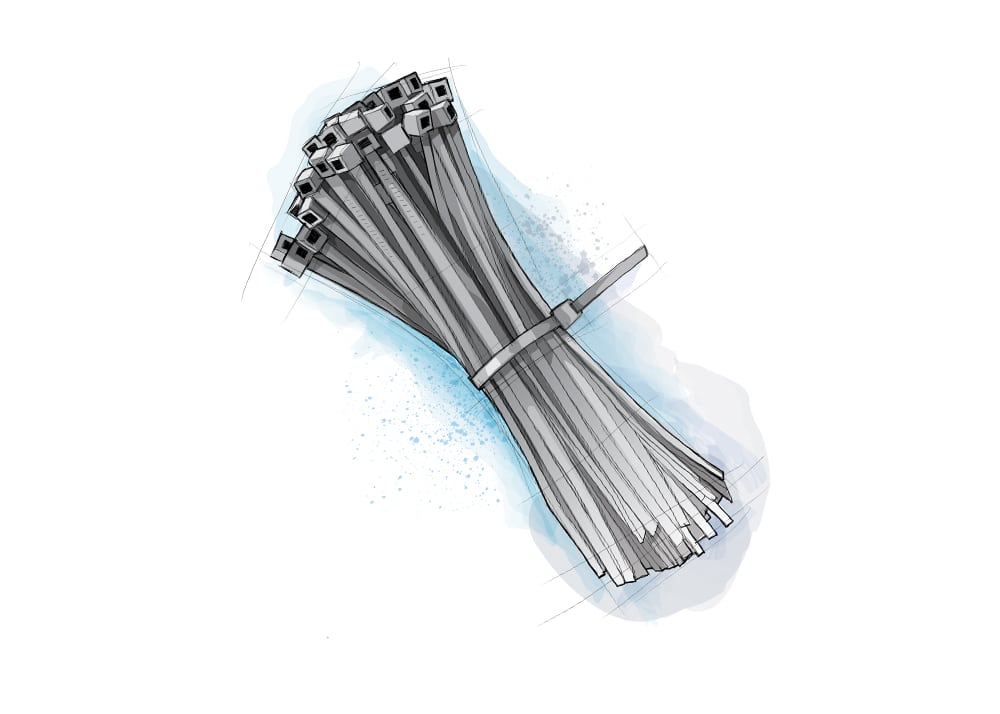
As part of the same repair-anything family as duct tape and WD-40, zip ties do innumerable duties when things need to be fixed. You may carry them for a particular purpose, but they’ll save the day for a number of chores, often things you hadn’t anticipated. Don’t leave the dock without some.
How to Hook a Billfish When Trolling
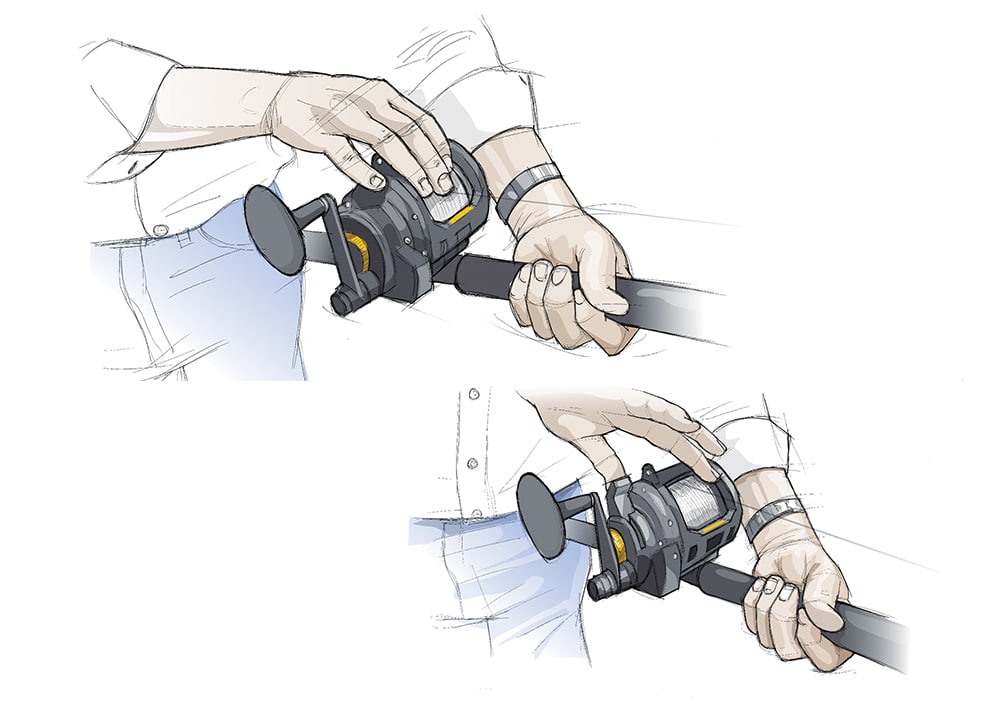
The art of natural bait trolling lies in the drop-back and hookup. No formula covers all the variables, because every strike is different.
Once the fish strikes, free-spool the reel, with your fingers lightly preventing backlash. Your thumb alone will heat up and recoil, but your fingers control the spool better. Continue to let line peel away, with the boat maintaining speed. Once the fish takes the bait and moves away, the spool will accelerate. When you see or hear that, ease the drag lever forward and wind down to fight the fish.
Don’t Lose Sight of Schooling Fish
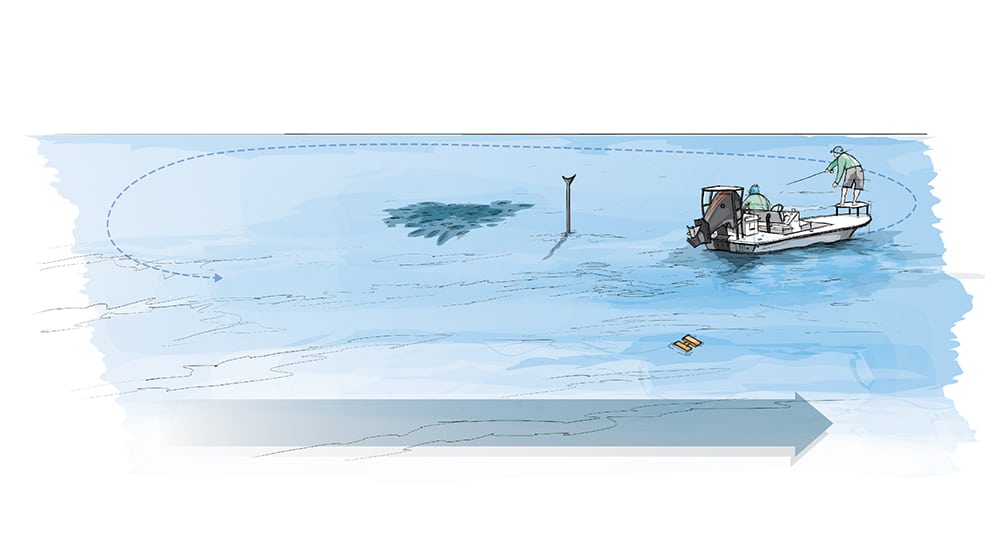
When drifting the shallows to locate schooling fish, stealth is critical. And once you locate the fish, it’s important to find them again on another pass. There are any number of ways to mark the school with electronics, if you choose, but the tried-and-true analog way still works, and is available whether you have electronics or not. Once you’re on top of the action, simply deploy a marker: a crab-trap buoy rigged with a weight and a line works, but so does a stake-out pole or a push pole, shoved into the bottom. Once you’ve drifted through the school and the action tapers off, keep drifting, far enough away not to disturb the fish, then fire up and swing wide for another pass, using the buoy or pole as reference, and set up to drift toward that as a target.
How to Rig a Live Shrimp
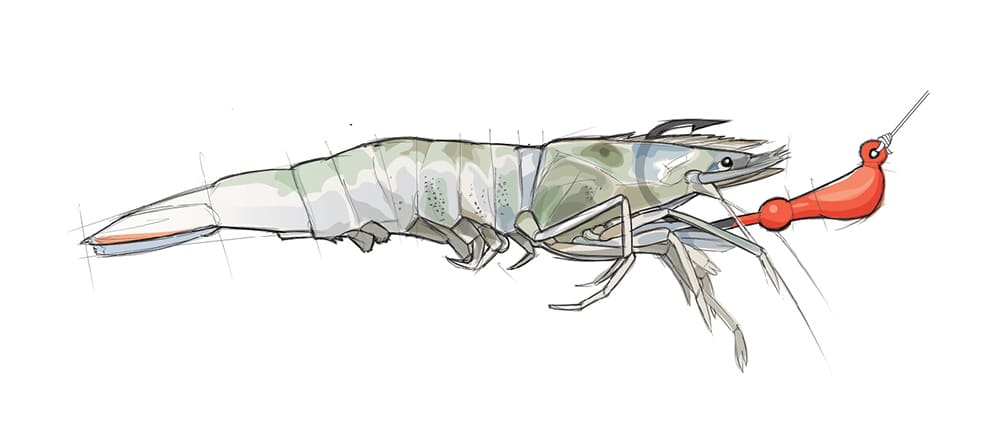
Few baits draw attention from feeding fish like a shrimp, either alive or dead. When you need to fish a shrimp deep, of course add weight to the line or the leader. This works fine for soaking or drifting, but often you get better results by casting and swimming the shrimp back. When the depth of the water dictates the shrimp needs to get down and you want to be able to still manipulate it on the retrieve, rig it on a jig. The tried-and-true Troll-Rite was made for this, but almost any jig works if rigged properly. Run the hook point up through the bottom of the head and out the top, taking care to avoid the dark spot. Hit that and the shrimp dies. For a better retrieve, break off the tail to prevent the shrimp from spinning, and release scent.
Apply Pressure to Big Fish with a Fly Rod
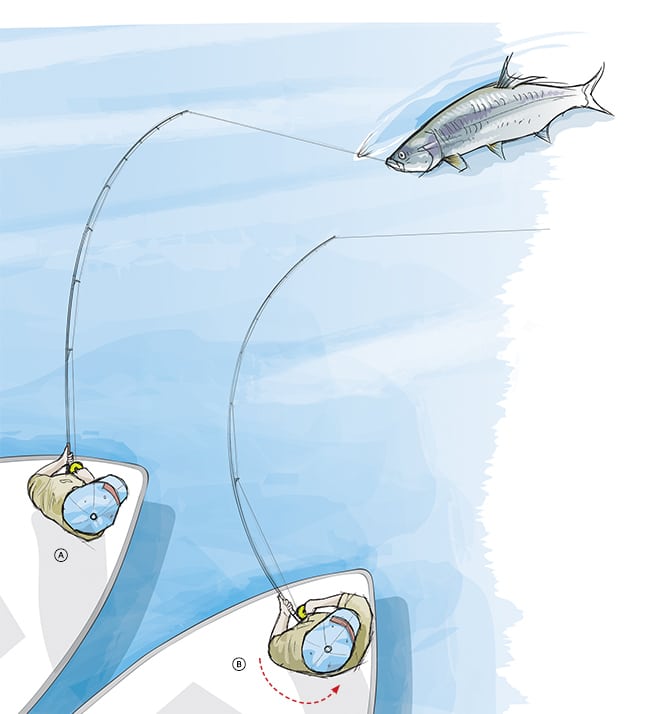
Use the line to apply maximum pressure to a big fish on a fly rod. With a slight bend in the rod, just enough for shock absorption, put the rod butt on your off-side hip and wind down with the reel, applying pressure with the line [A]. Once the line is tight, hold the reel handle in place, and with the rod butt still on your hip, rotate your body to bend the rod deep into the butt section [B]. With a little backyard practice, you’ll learn to pressure the tippet to just below the breaking point, minimizing fight time, which is far better for the fish than a prolonged battle.
Use the Flemish Coil with Ropes
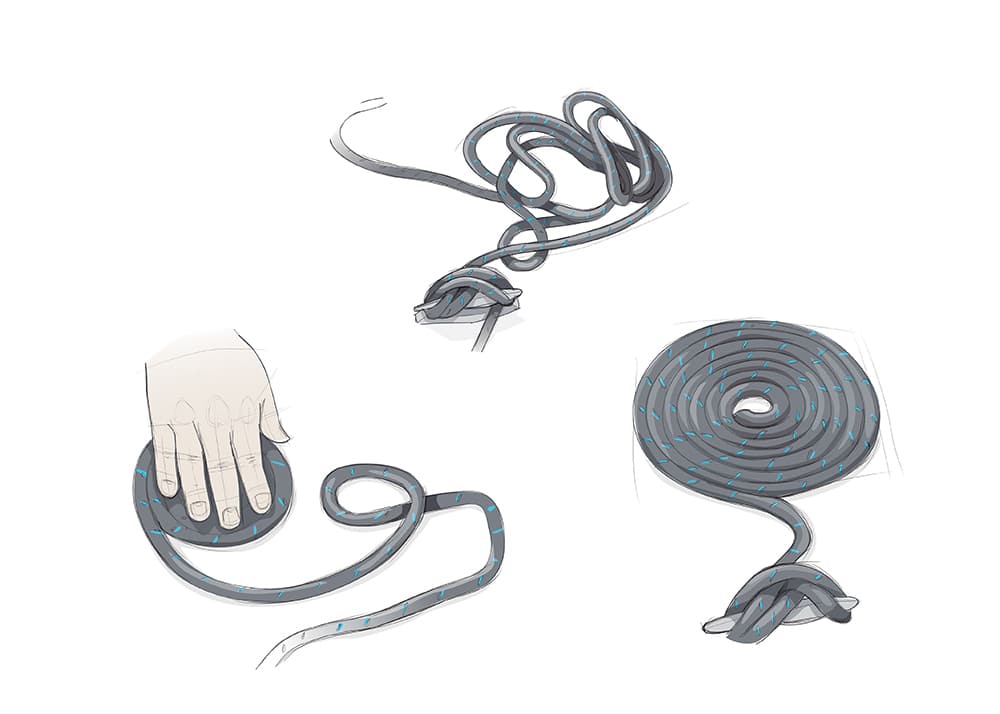
A neat and tidy boat is a happy, successful and safe boat, and the same holds true at the dock. Those tidily coiled lines seen on the bow deck of big sport-fishers and occasionally on the docks represent more than just cosmetics. The Flemish Coil, as the arrangement is called, serves several purposes. First of all, it keeps dock lines from tangling so they are easy to retrieve. It also keeps them from tumbling over the edge for a salty soak. Finally, this arrangement prevents accidents. Anyone strolling the dock will tread safely over the top of the coil, rather than tripping on a snarl of line. The Flemish Coil is ultimately practical as well as snappy-looking, and well worth the small effort required.
How to Hide Your Fishing Spots
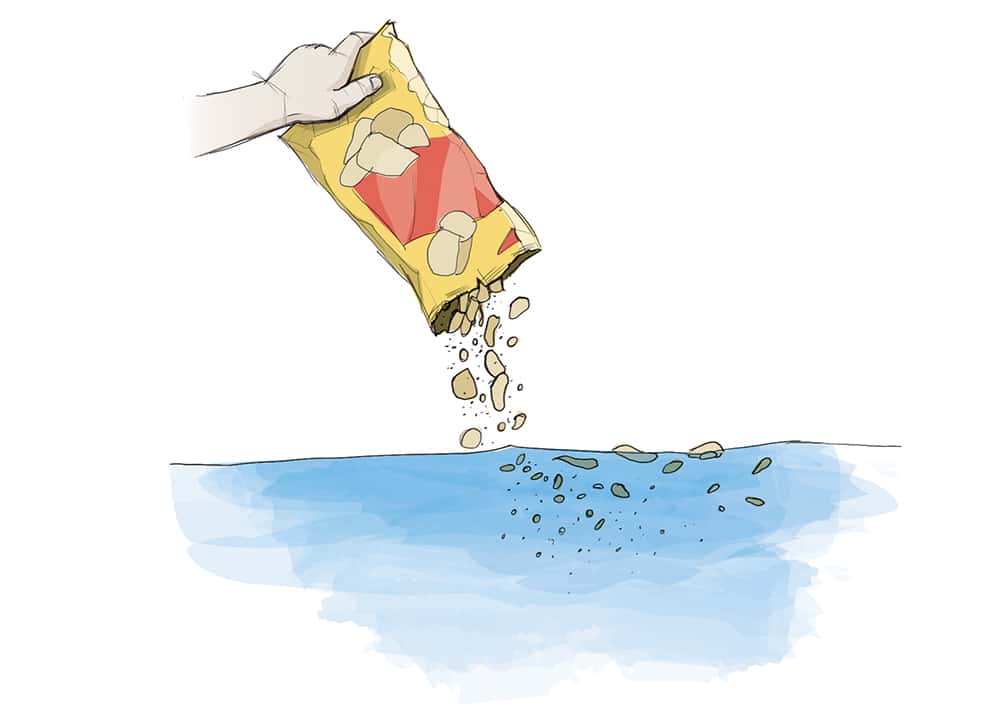
A friend renowned for his fishing success finds he is often followed when he leaves the dock by anglers hoping to share his success. He prefers to fish alone, so he developed a tactic to lose the admirers. He performs evasive maneuvers to increase the distance between himself and his pursuers, then when temporarily in the clear, he slows the boat, crushes a bag of chips, and dumps them overboard before racing off. The oil slick and chip crumbs quickly attract a crowd of birds, which draws the other anglers in to investigate while he makes his getaway.








